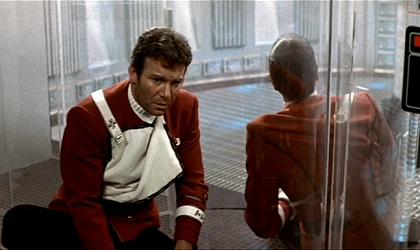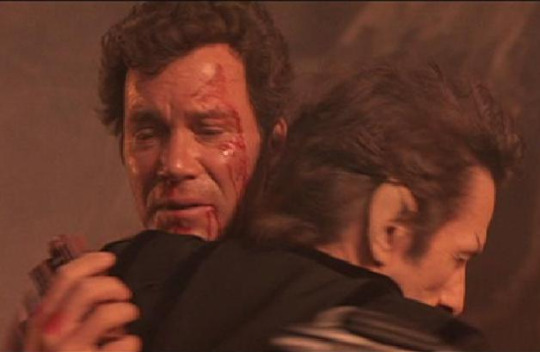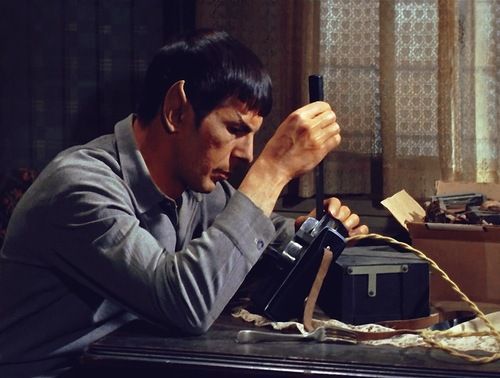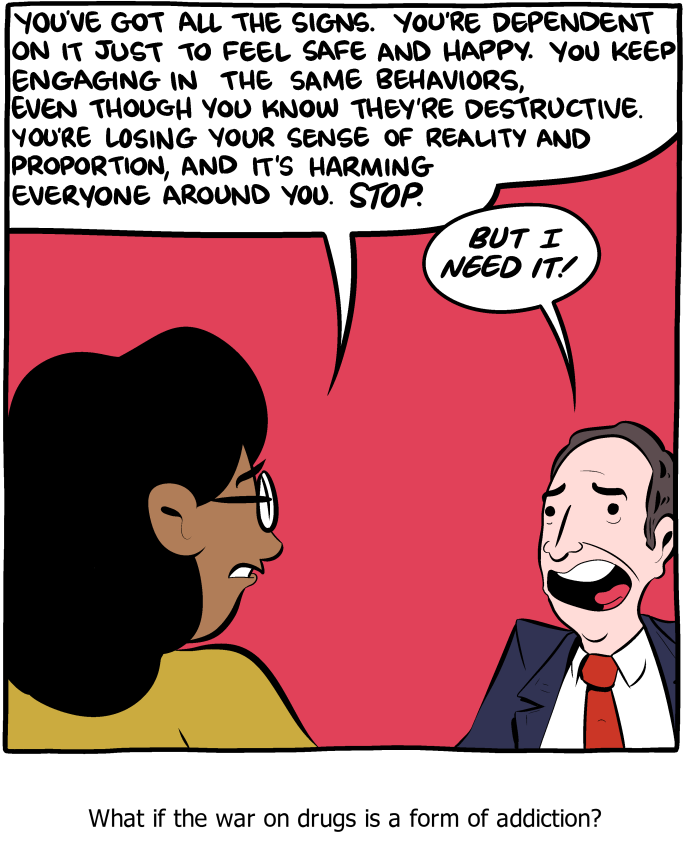It’s been eight years since the internet philosopher David Weinberger wrote, “Transparency is the new objectivity.” It’s been 16 years since Bill Kovach and Tom Rosenstiel said, in their great book The Elements of Journalism, “The willingness of the journalist to be transparent about what he or she has done is at the heart of establishing that the journalist is concerned with the truth.”
So transparency is not a new idea in journalism. But we’re finally starting to see what it means to build a value proposition around it. For my final post in what has been a devastating — but also inspiring — year for the public service press, I will try to summarize what is involved when transparency becomes the primary means of trust production.
It means you show your work. And at least eleven other things:
1. Here’s where we’re coming from. This is the biggest shift, and the hardest for traditionalists to accept. It will probably take the longest to unfold. Drop the voice of the god, ditch the view from nowhere, and instead tell us where you’re coming from. Then we can apply whatever discount rate we want.
Check out this disclosure page written by tech journalist Rob Pegoraro. About halfway down he describes where he’s coming from in covering technology:
I hate abuse of power and control freakery, whether it’s Microsoft choking off browser competition in a prior decade, Apple dictating what gets into its App Store in this one or big entertainment companies’ ongoing insistence on customer-hostile usage restrictions on digital media. The computer is among the most amazing general-purpose tools ever invented; why would you artificially constrain its utility? If you’re curious about my politics, the preceding paragraph should make it clear that I worry about abuse of power by corporations, not just the government. I vote accordingly.
Now that I know this about Rob, I can read his work through that lens. I don’t have to accuse him of bias toward anti-trust concerns in tech policy because he already told me he leans that way. That’s transparency.
2. What we know and don’t know. Simple and effective. Summarize what is known about a news event. Include what is unknown. Why is that transparency? Because it makes clear that the news system is imperfect, and the state of our knowledge is always evolving. That’s realer and more human. Easier to believe.
Example: London Terrorist Attack: What We Know and Don’t Know.
3. Here’s how we did this. Not just the story, but what went into it. This is transparency in the same way that a work of architecture that shows the skeleton of the building feels more open to a visitor’s gaze. ProPublica: How We Did Our Analysis of New York City Nuisance Abatement Cases. (This project won the Pulitzer Prize.) Here, Washington Post reporters Stephanie McCrummen and Beth Reinhard describe how they did their investigation of Alabama Senate candidate Roy Moore.
Why do it? Because the work that went into a story doesn’t always show in the results. This is by ProPublica’s Illinois chapter:
One of the key figures in Mick Dumke’s story about gun trafficking in Chicago was a government informant we knew only by his first name: Yousef. Finding him so we could get his perspective — or at least let him know, in the interest of fairness, that we were writing about his case — involved scouring hundreds of pages of court records to find his full name. Then we went through online databases to try to find his contact information.
Unable to reach him by phone or email, we spent hours driving to several suburbs to knock on the doors at homes where he and family members may have lived. Ultimately, we found and spoke with his wife and got a call from his attorney. Yousef didn’t want to talk with us, but he appreciated our efforts to offer him the chance.
4. Don’t believe us? See for yourself. Even more than “show your work,” this phrase captures what’s different about the manufacture of trust by means of transparency. Instead of an assertion of authority (trust us, we’re pros at this) an invitation to inspect the evidence. Here’s how I described it in 2015:
A news organization renders a judgment, and then provides the users with the tools and information to “check” that judgment by conducting essentially the same operation themselves. If I summarize what Senator Rand Paul said on ‘Face the Nation’ this week, and then link to the transcript so you can assess for yourself whether my summary is fair and accurate, I’m not asking you to take my word for it. I’m allowing you to discover on your own how faithful my summary is to the original. If my paraphrase is tendentious, you have everything you need to find me out and dock me points for distorting what Senator Paul said. But if my description is confirmed by the transcript I showed you, that’s points for me.
Take a look at this 2014 feature by the Upshot: who will win the Senate? It’s a forecasting model. Not only does the New York Times show its work by linking to the code and data on Github, it also allows users to create their own forecast. Here, the Times is so confident in its calculations, it encourages readers to re-run those calculations and compare what they get to what the Times concluded. That’s transparency. That’s show your work.
This is why the journalists at ProPublica — the leaders in newsroom transparency — put their data sets online. If you don’t believe them, you can look for yourself.
5. These are our current priorities. What do newsrooms cover? The news! What is news? What journalists cover. I think you’ll agree: that is not very transparent. The alternative is to level with the public about reporting priorities. Explain what you are devoting scarce resources to. The best example I have seen is This Is What ProPublica Is Now Covering. It doubles as a plea for help:
Topher Sanders
“I’m covering voter suppression. I want those secret emails and documents. Hook me up. It will stay between me and you.”
“In 2017, I’m covering voting rights and fair elections. Help me find places making it harder to vote.”
Different approach, same idea: The Citizens Agenda in Campaign Coverage, in which a news organization first synthesizes — then publishes — its priority list for election-year journalism. The agenda originates in an elaborate act of public listening. In every forum possible, voters are asked: what do you want the candidates to be discussing as they compete for votes this year? If through hard work you discover the answer to that, you not only have a ready blueprint for election coverage, but a way to persuade people that you are on their side. Of course, you have to be right. Your list has to be accurate.
Going public with your priorities makes it easier for the public to assess whether you have the right ones. That’s agenda transparency. We need more of it.
6. Help us investigate. These are the three of the most powerful words in journalism. Help us investigate campus sexual assault in Wisconsin. What’s transparent about that? Several things. You’re revealing a coverage priority. You’re acknowledging that you don’t know everything— or even where to go to look. You’re bringing people into the process, showing them how you work. You’re asking for help.
Here’s a fine example: Tell us what health care is costing you.
This is from The Guardian’s police-shootings project, The Counted.
The US government has no comprehensive record of the number of people killed by law enforcement.
So the Guardian has embarked on a special project – to work from an inaccurate standard toward a more perfect accounting, and tell the stories of people killed by police. But we need your help… Do you have information about an officer-involved death that the public deserves to know? This is the place to share the truth about police killings. Send us your tips, images, video and more – and if we verify it we’ll use it in our reporting.
“Help us investigate” says to the public: you have part of the puzzle, we have part. If we put our parts together we may get somewhere. (David Fahrenthold and I discussed this method at length in our podcast conversation.)
7. What it costs to do this work. The shifting terms for trust in journalism correspond to a shift in business model. More of the costs of news work are being paid by the readers of it, as digital advertising turns out to be a bust for most publishers (but not all.) If people are going to pay directly for their news and information, they need to know what they’re paying for. This is why I think newsrooms have to start being more transparent about what it costs to do their best work.
An outstanding example is This Is What’s Missing From Journalism Right Now by Monika Bauerlein and Clara Jeffrey of Mother Jones, who explained the frightening economics of an outstanding work of immersion journalism (“My four months as a private prison guard.”)
Shane’s prison project took more than 18 months. That included four months in the prison and more than a year of additional reporting, fact-checking, video production, and legal review, including work by more than a dozen other people on the MoJo staff. And that was the only way we could have gotten that story: By definition, incarceration is invisible to most people, and that’s doubly true for private prisons. Recordkeeping is spotty, public disclosure is limited, visits are difficult. The only people who can describe what really goes on inside are prisoners, guards, and officials, all of whom have a strong interest in spinning the story. To get at the truth, we had to take time, and go deep.
And we had to take considerable financial risk. Conservatively, counting just the biggest chunks of staff time that went into it, the prison story cost roughly $350,000. The banner ads that appeared on the article brought in $5,000, give or take. Had we been really in your face with ads, we could have doubled or tripled that figure—but it would have been a pain for you, and still only a drop in the bucket for us.
The stark difference between costs of $350,000 and ad revenue of $5,000 made the point for Mother Jones. “If you want us to play the long game, the most powerful thing you can do is to do the same. In other words, become a sustaining donor with a tax-deductible gift that renews every month.”
Transparency about costs is not normal yet, but I believe it is coming. So is, “here’s who funds us.”
8. What did we miss? This is a question you often see when journalists are making “best of” lists. (Examples here and here.) But I think it should become common practice in publishing complex stories. “What did we miss?” promotes transparency because it says no report is complete. It invites correction without rancor.
9. Attack our reporting? We will respond. Transparency involves humility because it dispenses with the sort of mystifications on which professional authority often rests. “What we don’t know.” “See for yourself.” “What did we miss?” These remove mystique. But transparency is also about being extra clear. It means leveling with readers. When a published report is subjected to unfair attack, the transparent thing to do is to not to ignore it, but to respond with chapter and verse.
Again, ProPublica leads the way: Red Cross Demands Corrections to Our ‘Misleading’ Coverage. Here’s Our Response. Why do I call this transparency? Because the traditional response, “We stand by our story…” is assertive, but opaque.
10. If you’re coming in the middle of the movie… One of the problems with the news system as it stood before the internet was that it assumed a constant reader. News accounts gave the newest information. They came to us as a series of updates leading with the latest facts. That’s fine for those who have already internalized the architecture of a story. For everyone else a series of updates is a terrible way to learn. (I wrote about this problem back in 2008.)
There is a greater awareness now that most people are coming in the middle of the movie, meaning: by the time they realize something big is going on, a lot has already happened. A stream of updates won’t address that. Journalists have to offer us more help. This was one of the founding premises of Vox.com. Giving people the tools they need to understand an ongoing story is different than providing them with a steady flow of news about it. You can see the difference in this “background” section at Syria Deeply, which specializes in helping readers track the ongoing crisis there. (“From the lead up to the uprising to Russia’s military intervention, click here to understand the ins and outs of the last five years of violence.”)
This is transparency in the sense that it explains where news stories come from. It reveals their anatomy. Anything that helps readers see more clearly “into” the news makes it easier for them to trust it.
11. When you have nothing to add don’t try to add anything. At the 2017 Online News Association in Washington, I moderated a panel with Rob Wijnberg of De Correspondent, the Dutch platform that is the most successful member-funded news site in the world. (I am working with them to bring their approach to the US.) At ONA, Wijnberg told the following story:
In March 2016 Brussels was hit with a coordinated terror attack that killed 32 people and injured more than 300. Belgium is next door to The Netherlands; more than half the population speaks Dutch. Journalists at De Correspondent felt they need to jump on the story. Editor-in-chief Rob Wijnberg was not so sure. His newsroom had no one on the ground in Belgium. Among his correspondents none specialized in international terrorism. The attacks were a huge story, but that didn’t mean De Correspondent could contribute to public understanding. Still, they couldn’t ignore what was happening, either.
Wijnberg decided to write an email to all members of De Correspondent. It took note of the events in Belgium. It directed readers to other news organizations that were doing solid coverage of the attacks. And it said, “we don’t have anything to add but we’ll be back in a few days.” And that day De Correspondent experienced its largest one-day gain in members up to that point in its three-year history. The lesson: Not publishing when you have nothing to add builds confidence in the product. It’s transparent because it says to readers: we don’t do everything. Or as Jeff Jarvis put it in 2007: do what you do best and link to the rest. (To listen to Rob Wijnberg tell the story go to 29:02 in this video.)
There’s more I could have covered in this review. “We heard you.” (After a flood of complaints.) “Here’s how journalism works.” (News literacy.) Open newsroom practices. (Inviting people in.) Coming clean when you’re the story. (Or when you make a major mistake.) Not just the problem, but what can be done about it. (Solutions journalism.) Transparency as deeper engagement. (Relationship-building.)
Here’s where we’re coming from… What we know, what we don’t know… Here’s how we did this story… Don’t believe us? Look for yourself… These are our current priorities— our agenda, if you will… Help us investigate… What it costs to do this work… What did we miss?… Attack our reporting? We will respond… If you’re coming in the middle of the movie… When you have nothing to add don’t try to add anything… And of course: show your work.
These are the new terms on which trust can be won in journalism. The reason they can’t be ignored involves a shift in power. A few weeks ago, Jonah Paretti, founder and CEO of Buzzfeed, put it this way.
In the past, consumers were loyal to brands — brands created distant, aspirational images and we strived for them. Increasingly, the balance of power has shifted and consumers have more control. Today, brands need to be loyal to consumers.
The users of journalism have more control because they have more choices. Because they can compare news accounts. Because the media system is more two-way than it once was. Because they are paying more of the freight. Transparency is not a slogan, or a nice-to-have. It’s a recognition that the world has changed and journalists are in the fight of their lives.
The post Show your work: The new terms for trust in journalism appeared first on PressThink.





































